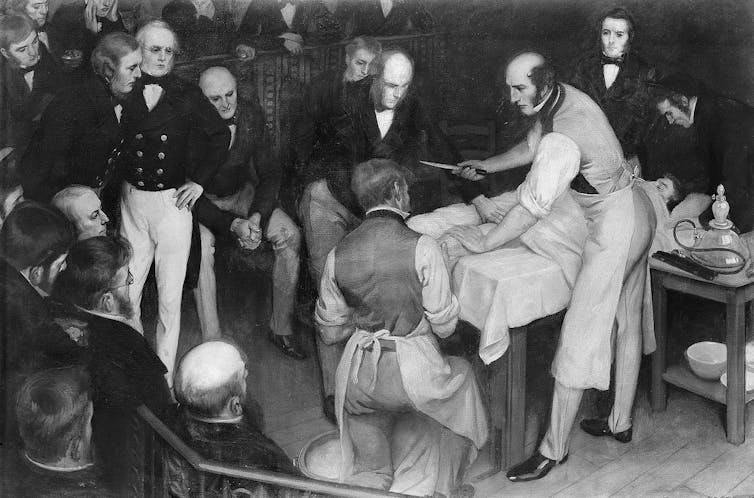The human body has a capacity to repair almost all of its tissues and does so on a daily basis in response to things such as exercise. Bone in particular is good at healing itself. But when things go catastrophically wrong, beyond the capacity of the body to repair itself, it requires intervention from an external source – usually a surgeon.
In the UK it takes about ten years, after obtaining a medical degree, to become a consultant surgeon in the NHS. Surgical training in other countries is often equally rigorous. Nevertheless, some people turn to non-medical people to perform operations on them. A recent example is the Australian man who had his left testicle removed by a wannabe surgeon. But there are also many documented cases of people who have performed surgery on themselves.
When people take these desperate measures it usually isn’t because there is a shortage of qualified surgeons to do the job. Most cases of self-surgery are performed in life-or-death situations. For instance, people whose limbs become trapped and who are unable to contact anyone.
Limbs are usually straightforward to amputate because they are mostly soft tissues: muscles, nerves and connective tissues surrounding the hard bone.
Perhaps the most famous case of limb self-surgery is the one portrayed in the film 127 Hours. The film recounts the true story of mountaineer Aron Ralston who had to saw off his own arm after it became trapped when a boulder fell on it.
Similarly, in 2002 a US fisherman cut through his arm after it became snagged in a winch while at sea. He cut off his arm at the elbow to save himself.
In both cases, the men were met by medical professionals not long after the traumatic event.
To sever a limb, the person needs to use force to break their bones (this being the most difficult tissue to cut through) and then implements such as knives and pliers to break the soft tissues. They also need tourniquets to tie off blood vessels so they don’t bleed to death. A strong constitution is also useful.
Medical literature has also documented cases of genital surgery, especially in men. The penis and scrotum are easy to cut through as they mainly comprise soft tissue, but they have lots of blood vessels and a rich nerve supply, which makes this type of surgery tricky, not to mention painful. The motivations for doing this kind of surgery are varied and, in some cases, unknown.
Cases of abdominal self-surgery have been documented, but less frequently than limb or genital surgery, probably because of the complexity of the anatomy and the fact that extreme trauma to these areas often results in death. One man tried to remove the nerve supply to his adrenal glands to suppress unwanted aggression and sexual impulses.
The most remarkable example of abdominal self-surgery was the case of a 40-year-old Mexican woman who, in 2004, performed a caesarean on herself using a kitchen knife. She applied her knowledge of slaughtering animals to guide the knife through her abdominal wall and into her uterus. All she had for anaesthesia was three shots of “hard liquor”. Although both mother and child survived, there were long and complicated post-operative issues.
If you think that’s bad…
A lack of anatomical knowledge could result in the self-surgeon doing more harm to themselves than good, but given people who perform this type of surgery are often in life or death situations, it is sometimes worth the risk.
The main risks are damaging vital organs, severing blood vessels and infection – the human body is home to many species of bacteria, both internally and externally, many of which are opportunistic when injury or disease are inflicted on the body.
While thoughts of having to perform self-surgery brings dread and fear to the average human, it is not too different to undergoing surgery in the early 1800s where anaesthetics and aseptic techniques were yet to exist. These surgeries had to be very quick and were often very bloody.

A notable 19th century surgeon was Robert Liston. The Scottish surgeon was certainly quick – he could amputate a leg in less than three minutes – but also very bloody. He is the only surgeon to have achieved a 300% mortality rate as a result of an operation. In his most famous amputation case, the patient, his assistant (who lost a finger while holding the patient down) and an observer died. The first two from infection of their wounds and the observer from fright, believing he had been cut when really it was only his coat that had been cut.

